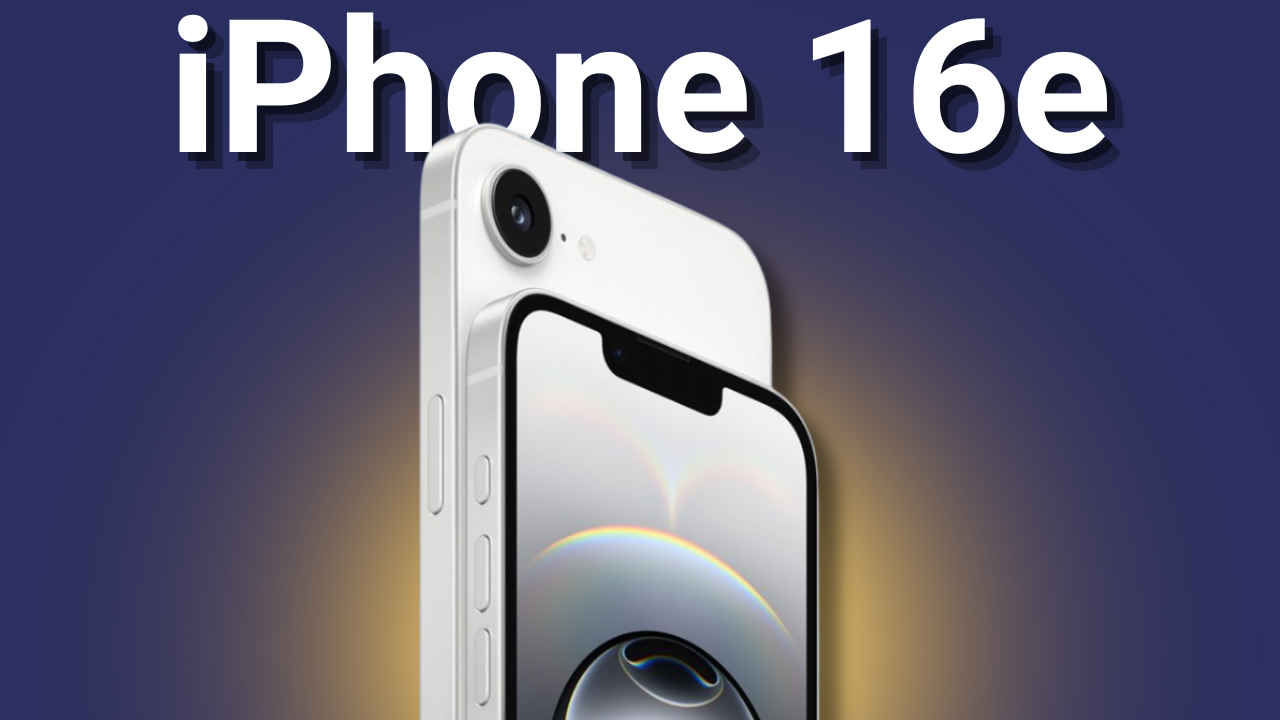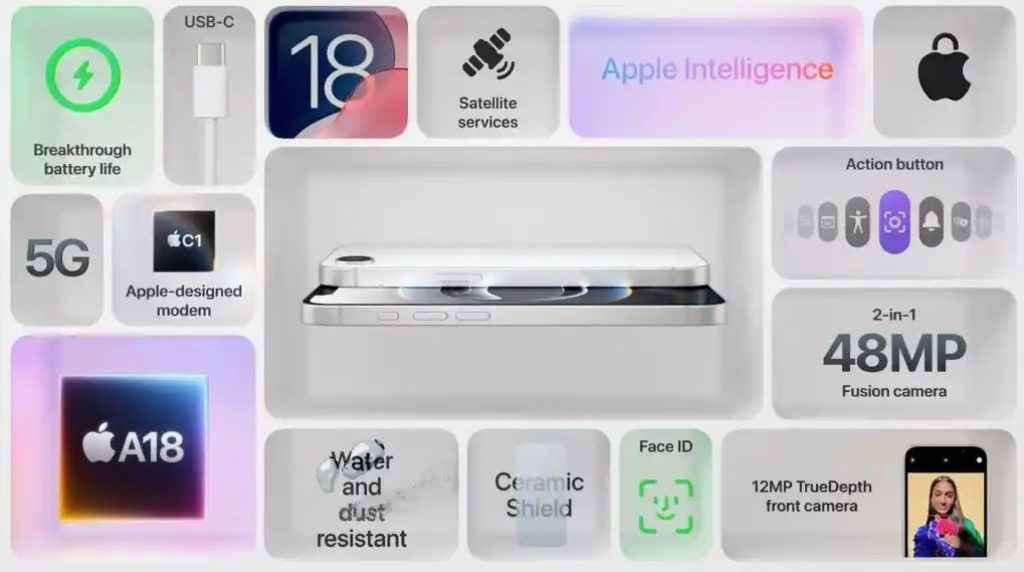iPhone 16e: Apple’s affordable AI dream or expensive distraction?

So Apple went and did it. They killed the ‘SE’ brand, gave us a so-called budget iPhone named iPhone 16e, and stuck a ₹59,900 price tag on it – yeah you read that right. In an era where all eyes are on fancy foldables, AR glasses, and AI everything, Apple decides to revisit the old make-iPhone-cheaper-but-not-too-cheap playbook. At stake is the multi-billion dollar question of whether the iPhone 16e is a sweet spot for price-conscious smartphone consumers, or is it stuck in no-man’s land – expensive for a budget phone, severely compromised compared to Apple’s flagship?
 Survey
SurveyWhen Apple launched the iPhone SE as a beacon of affordability, a ₹39,000 device with older internals but a small, beloved form factor, it gained a cult following for those desiring an affordable, vintage version of iPhone. But it never lit up Apple’s global sales chart. In fact, data suggests the iPhone SE line accounted for just 1-5% of overall iPhone sales recently. With this context in mind, it makes sense for Apple to try something different.
Also read: After iPhone 16e launch, Apple discontinues these iPhones in India
So this year, Apple unveils the iPhone 16e, basically scrapping the ‘SE’ name and saying, trying to tweak the formula with a bigger screen and fresher hardware. But still priced ₹16-17k more than the last SE from 2022. No wonder folks on social media started trolling the iPhone 16e, immediately after its launch announcement, calling the ‘e’ in iPhone 16 ‘error’ and ‘expensive’ – far from ‘economical’. It definitely makes you wonder what Apple was thinking, right? The answer may lie in the past.
Apple’s big budget iPhone bet
Two years after the original iPhone SE was launched in 2016, Apple rolled out the iPhone XR in 2018 as a more “affordable” device that actually sold brilliantly, bridging the gap perfectly between the super-cheap iPhone 8 and the premium iPhone XS at the time. Apple banked on a nice design, large display, decent camera, and a simpler approach to reeling in cost. The result? iPhone XR sales soared, according to Counterpoint Research. At a time when iPhone sales were down 20% on a yearly basis in the month of November 2018, the iPhone XR emerged as the best-selling model, according to reports.
As far as Apple’s concerned, it hopes the iPhone 16e is a spiritual successor to the iPhone XR, in terms of overall winning formula. Larger screen, latest hardware, but lacking some of the camera perks or design flair of the flagship iPhone 16 and 16 Pro lines.

In a price-sensitive market like India, where it’s almost ritualistic how folks wait for Diwali or ecommerce discount events to snap up older iPhones at half or two-thirds the cost of the newest model. It’s as much about getting a good bargain as it’s also about brand aspiration. Smartphone buyers in India seem to want that Apple logo, and if an older model is cheaper, so be it. But does iPhone 16e’s bigger, 6.1-inch screen solve the budget conundrum? At ₹59,900, you’re paying more than, say, an iPhone 13 you might grab on sale. Is that attractive enough over high-end Android smartphone alternatives?
With the iPhone 16e, Apple’s definitely closing the chapter on smaller screen iPhones. In India, they’re betting that enough people who want to flaunt a new iPhone will pay ₹50-55k (with credit card and exchange discounts) instead of rummaging e-commerce deals for a two-year-old model. The iPhone 16e is Apple’s attempt to plug the gap between the old sub-₹50k bracket iPhones and the high-end territory above ₹75k of latest-gen iPhones.
Accelerating AI: Apple Intelligence ‘more affordable’
Of course, one big difference from the SE line is that the iPhone 16e packs Apple’s AI features. With Apple Intelligence (like advanced voice recognition, on-device Siri improvements, better text prediction, etc.), the 16e shares the same chip architecture as the iPhone 16. If you’re someone who wants Apple’s best new AI smarts at a cheaper price, the iPhone 16e might look appealing.
Also read: iPhone 16e: Buy it only for Apple Intelligence, here’s why
This could be a critical factor going forward, especially since Apple Intelligence is still rolling out and far from fruition. Apple knows that modern hardware is key for Apple Intelligence to compete against Gemini on Android, Google’s generative AI, to Samsung’s ramping up of its own AI-driven features. Apple doesn’t want people to be stuck on an old A13 or A14 chip if it can help it. If Apple needs the iPhone user base to adopt AI en masse, it can’t have them linger on old models from 2019. So, from a purely strategic view, the iPhone 16e is Apple’s attempt to ensure the user base for Apple Intelligence grows wider fast.
Still, the criticisms aren’t misplaced. The iPhone 15 is currently very closely priced to the iPhone 16e. If you stretch your budget a bit, you can get a phone that’s presumably more advanced in some features or has an extra camera lens. Or you might snag an older iPhone 13 during an online flash sale for much cheaper – still quite capable, not that far behind in performance, but with no Apple Intelligence.
Can iPhone 16e succeed where iPhone SE didn’t?
Apple’s done this dance before – if the iPhone 16e is too cheap, it undercuts the flagship iPhone 16 line. Too expensive, and it fails to woo the so-called “budget” crowd. That creates a tricky balancing act for Apple, depending on how Apple’s brand magic works.

Global expectations are fairly optimistic, projecting the iPhone 16e might do “slightly better” than the iPhone SE – thanks primarily to its bigger screen, modern design, and Apple Intelligence. The older SE had an older, vintage look (big bezels, home button) and a smaller display that not everyone loved – especially in China and India, where large-screen phones and modern aesthetics matter greatly.
Apple’s making sure its AI doesn’t stay locked behind a paywall so high only premium buyers can cross. The 16e tries to be that middle ground. At the same time, the ‘e’ rebrand signals Apple stepping away from the concept that a budget iPhone must be sub-₹50,000. Maybe Apple decided sub-₹50,000 doesn’t net them the profit margin or brand perception they want here in India. Still, they risk losing out to premium mid-range and high-end Androids, so it’s a gamble, one that Apple might afford to make. We won’t know for sure until the iPhone 16e starts shipping and consumers vote with their money.
Could the iPhone 16e outpace the previous SE, dethroning it as the best “budget” iPhone we’ve had? Possibly. Or it might flop if the Indian market perceives ₹59,900 as too steep. As much as Apple banks on brand loyalty, let’s not forget entire segments of buyers in India are more loyal to their wallets than any one smartphone brand. And for the price of an Apple logo, they’re still quite perfectly happy rocking an older iPhone snagged in an online deal.
Also read: Apple iPhone 16e vs iPhone 16: Key Differences, Specs & Which One to Buy
Jayesh Shinde
Executive Editor at Digit. Technology journalist since Jan 2008, with stints at Indiatimes.com and PCWorld.in. Enthusiastic dad, reluctant traveler, weekend gamer, LOTR nerd, pseudo bon vivant. View Full Profile